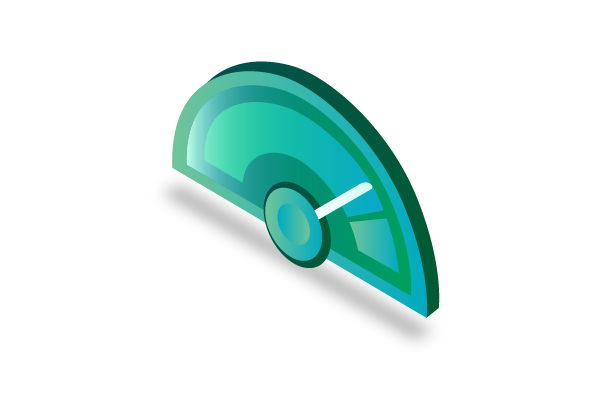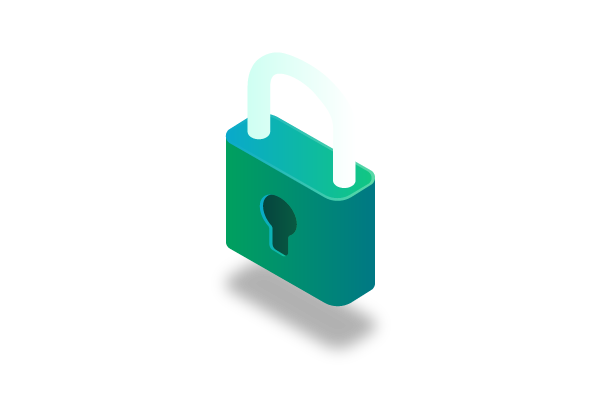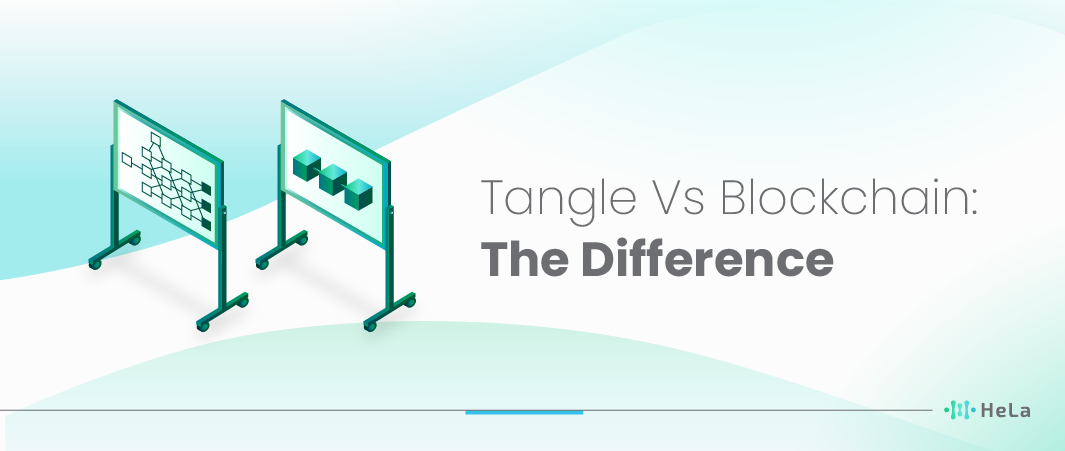The environment of decentralized technologies has seen a dramatic transition in recent years. Two heavyweight technologies, Tangle and Blockchain, have arisen alongside the meteoric rise of cryptocurrencies and decentralized platforms. While both promise robustness and transparency, they employ distinct methodologies and have unique strengths. This article will unravel the intricacies of Tangle and Blockchain, offering readers a clear perspective on which technology aligns best with their needs.
Decentralization is more than just a buzzword; it represents a move towards democratized control and away from centralized entities. As the decentralized movement gains momentum, understanding the technical underpinnings becomes critical. Whether you’re a developer, an investor, or merely a curious enthusiast, a deep dive into Tangle and Blockchain will empower you with insights to navigate this evolving terrain.
When discussing Tangle and Blockchain, one might be tempted to view them as competitors. While they’re both decentralized technologies, their applications and approaches can differ significantly. This comparative study aims to shed light on these differences, fostering a comprehensive appreciation for both.
The Genesis: What are Tangle and Blockchain?

Tangle and Blockchain serve as foundational layers for various applications, but their origins and fundamentals diverge.
Blockchain
Blockchain, which emerged in 2008 with the advent of Bitcoin, is essentially a chain of blocks that store transaction data. Imagine it like a digital ledger that links each block to the one before it, forming an unchangeable chronological record. This immutability is made possible through consensus mechanisms like Proof of Work or Proof of Stake, which ensure that transactions undergo verification by participants within the network.
Tangle Vs Blockchain: When comparing blockchain to Tangle, it’s essential to understand that blockchain’s structure relies on a linear sequence of blocks, whereas Tangle operates differently. The IOTA project created Tangle, a distributed ledger system. It uses a novel method in which transactions are connected in a web-like structure, making it scalable and effective.
In a word, Tangle introduces advancements in scalability and transaction speed, whereas blockchain’s value resides in its resilience and security. The choice between them depends on the specific needs of the use case, with blockchain offering a tried-and-true solution and Tangle offering a promising alternative for applications that require high throughput and speed.
Also Read: What Are Smart Contracts? Guide in Understanding Their Functionality
Tangle
Tangle is a unique system that’s closely linked with the IOTA cryptocurrency. It does things quite differently from the traditional blockchain.Tangle uses a Directed Acyclic Graph (DAG) in place of conventional block and chain structures. In this setup, dealings are intertwined with one another, much like a spider web. It is of utmost importance to duly acknowledge that with every subsequent transaction, when it is executed, it unequivocally validates the authenticity and integrity of the preceding two transactions. As fate would have it, the network’s speed soars to new heights, hand in hand with the ever-expanding horde of users.
Let’s compare and contrast Tangle with blockchain right now. Tangle’s DAG structure, in contrast to typical blockchains, which only process one transaction at a time, enables the cryptocurrency to execute several transactions at the same time. Because of this, it is possible that confirmation times could be shortened while transaction fees would be reduced.
Tangle, with its DAG setup, challenges the traditional blockchain model. By placing great importance on the web of interconnected transactions, which possess the power to enhance both speed and efficiency, this entity has established itself as a prominent player in the illustrious realm of the bitcoin industry.
Scalability and Speed

How do Tangle and Blockchain stack up when it comes to being scalable and fast, considering the growing demands of the digital world?
Blockchain
Lots of people have been super stressed about how blockchains can scale. You gotta understand that there might be some delays as these blockchain networks get bigger. Due to block size constraints and the time it takes to confirm transactions, transaction times and fees may increase. This is where features like Bitcoin’s Lightning Network and Ethereum‘s sharding shine as potential fixes. However, we must not overlook the fact that they also present their own unique difficulties.
Now, let’s talk about Tangle vs. Blockchain. Tangle is another technology that’s often compared to blockchain. It’s considered more scalable because it doesn’t rely on blocks and miners. Instead, it confirms transactions through a web of interconnected nodes. Yeah, it’s got its upsides, but there are also a few downsides to consider. For one, it might not have as many users as the more traditional blockchains. Plus, there could be some security risks involved.
When you step back and take a look, it’s pretty obvious that blockchain tech still needs to do some work to figure out how to scale things up. Whether it’s through the Lightning Network, sharding, or newer contenders like Tangle, the crypto world is actively seeking ways to keep the pace as the technology evolves.
Tangle
Tangle, unlike traditional blockchains, has a design that naturally tackles the issue of scalability. It’s actually pretty simple: the more people use the network, the faster and safer it gets. When you look at Tangle, it’s pretty cool because it’s simple and straightforward. It’s perfect for stuff like the Internet of Things (IoT) where there’s a lot of transactions happening. It’s way different from blockchain technology.
When we compare Tangle to traditional blockchain, one key difference is evident: scalability. Blockchain’s speed remains relatively constant, regardless of transaction volume, often leading to bottlenecks and slower performance during high traffic. In contrast, Tangle’s design shines in high-transaction environments, offering efficiency and security that improve as more users and transactions join the network.
The flexibility and responsiveness of Tangle make it a promising choice for businesses and industries dealing with constant streams of data and transactions. As we move forward into the IoT era and other applications with substantial transaction demands, Tangle’s “activity equals speed” approach stands out as a solution that meets the evolving needs of a connected world.
Security Mechanisms

The decentralized world’s lifeblood is trust, making security paramount. How do these technologies ensure that trust?
Blockchain
Blockchain security, particularly in systems utilizing Proof of Work, hinges on the miners who maintain the network. These miners play a pivotal role in verifying and adding transactions to the blockchain. The robust security of the blockchain is primarily due to the immense computational power required to manipulate a block or compromise the entire chain. This high level of security is indeed a strength but comes with the challenge of potential centralization, as mining operations tend to be profitable only for those with substantial resources.
When we consider the debate between Tangle and Blockchain, a key point of differentiation emerges. Tangle, the underlying technology of IOTA, diverges from traditional blockchain systems like Bitcoin and Ethereum. While blockchain relies on miners to validate transactions through Proof of Work, Tangle employs a different approach. Instead of miners, Tangle uses a network of connected devices to validate transactions in a decentralized manner, aiming to eliminate the centralization concerns associated with traditional blockchain networks.
In essence, blockchain’s security lies in the hands of miners and their computational might, which deters malicious actors. Nevertheless, this very strength poses centralization challenges, while Tangle seeks to offer a different path by decentralizing the validation process and potentially addressing some of these concerns.
Tangle
Tangle is a unique system that’s all about security without the need for traditional elements like blocks or miners. It’s meant to operate without a single, overarching leader, or “decentralized.” Instead, a Directed Acyclic Graph (DAG) is used to organize the series of transactions. Here’s the cool part: to approve your own transaction, you’ve got to help out by validating two other transactions. This interconnected setup makes it really hard for anyone to pull off a sneaky attack because changing one transaction would mean messing with a whole bunch of others.
Also Read: 12 Blockchain Best Node Provider Powering Web3 to Watch in 2023
Now, let’s talk about how Tangle compares to good old blockchain technology. Blockchain relies on miners to validate transactions and add them to blocks. But Tangle takes a different approach by making everyone who wants to use the network pitch in by confirming others’ transactions. This makes Tangle more decentralized and less susceptible to bad actors trying to manipulate things.
So, in a nutshell, Tangle’s DAG structure and its “help two, be helped by two” rule make it a pretty secure system. It’s like a community watch for your digital money, where everyone’s got each other’s backs.
Environmental Considerations
We gotta think about how these technologies will affect the environment as we become more aware of it. It’s super important, you know?
Blockchain
Bitcoin, like, the most famous example of a Proof of Work blockchain, is like, super notorious for needing a crazy amount of energy. The mining process is all about these super strong computers trying to solve tricky math puzzles. But, the downside is that it uses up a lot of electricity. This whole energy thing is making people worry about how it’s messing up the environment with its huge carbon footprint.
Tangle Vs Blockchain: To provide some context, Tangle is a different approach to blockchain technology that powers cryptocurrencies like IOTA. Unlike traditional blockchains, Tangle doesn’t rely on mining and the associated energy-intensive Proof of Work mechanism. Instead, it employs a system where transactions are directly validated by other transactions, making it more energy-efficient.
The environmental concerns surrounding Proof of Work blockchains like Bitcoin highlight the need for alternative technologies like Tangle. Tangle’s energy-efficient design offers a promising solution to mitigate the environmental impact of blockchain technology while still facilitating secure and efficient transactions.
Tangle
Let’s talk about Tangle, a fascinating alternative to traditional blockchains that’s making waves for its eco-friendly approach. Unlike blockchain, Tangle doesn’t rely on miners or energy-hungry consensus mechanisms. This means it uses a lot less energy to function, which is fantastic news for the world. As an added bonus, Tangle’s lightweight construction helps cut down on emissions. In a world where sustainability is a top priority, Tangle aligns perfectly with the global push for greener technologies.
Tangle’s unique approach to achieving consensus without miners and energy-intensive processes is a game-changer. It uses a directed acyclic graph (DAG) structure, where transactions are linked together in a web, allowing for efficient and secure data validation. This method reduces carbon emissions and does away with service charges. It’s a welcome change of pace for the blockchain industry, which has been plagued by criticism over high fees and limited scalability.
In the grand Tangle Vs Blockchain showdown, Tangle shines as the environmentally conscious choice. While blockchain has its merits, Tangle’s lightweight, energy-efficient, and green technology is certainly worth considering, especially in a world increasingly concerned about its ecological footprint.
Adoption and Application
While technicalities are essential, real-world adoption is a testament to a technology’s viability.
Blockchain
Blockchain technology has gained widespread recognition for its versatility across various industries, from finance to supply chain management. Its transparent and unchangeable nature has made it a top choice for sectors in need of reliable audit trails. So, basically, blockchain is like a digital ledger that keeps track of transactions in a way that can’t be changed and is open to everyone. So, like, when lots of people have their own copy of the ledger, it’s easier to keep everyone in check.
Tangle is like a different version of blockchain. It has some similarities, but it works in its own unique way. Just remember, this is a really important thing to keep in mind. Tangle uses a more complicated and decentralized structure than blockchain does to validate transactions. This structure does not require miners and may offer potential benefits in terms of scalability and transaction speed. Blockchain relies on a chain of blocks to validate transactions.
Returning to blockchain, its applications are far-reaching. In finance, it simplifies and secures transactions, reducing fraud and streamlining the financial sector. In supply chain management, blockchain enables tracking and tracing of products from origin to destination, ensuring authenticity and quality. Blockchain is super cool because it’s all about being transparent and irreversible. It’s totally making things more innovative and awesome in a bunch of different areas.
Tangle
The Internet of Things (IoT) is where Tangle really shines. The reason why this technology is so popular is because it doesn’t cost much to use and can be easily adjusted to fit different needs. This makes it perfect for those tiny transactions and all the chatter that goes on between connected devices.
Tangle Vs Blockchain: Unlike traditional blockchains, where you often pay a fee and scalability can be a challenge, Tangle offers a more cost-effective and efficient solution for IoT. Think of it as the friendlier option for micro-transactions and all the communication that happens between your smart devices.
This means Tangle is the go-to choice for many when it comes to powering the IoT sector, offering a seamless and affordable way for devices to interact and share data without all the baggage that sometimes comes with traditional blockchains.
Conclusion
Tangle and Blockchain, both groundbreaking in their own right, offer unique solutions to the challenges of decentralization. While Blockchain has become synonymous with cryptocurrencies, Tangle’s promise lies in its adaptability and future-centric design, especially in high-volume environments like IoT.
Choosing between Tangle and Blockchain isn’t a matter of superiority but of alignment. One may be better suited than the other, depending on the context. Tangle and Blockchain will both play important roles as we progress in the field of decentralized technologies.
As with all technological evolutions, understanding is power. By grasping the fundamentals of Tangle and Blockchain, we’re not only better positioned to harness their potential but also to contribute to a more decentralized, transparent, and inclusive future.
Disclaimer: The information provided by HeLa Labs in this article is intended for general informational purposes and does not reflect the company’s opinion. It is not intended as investment advice or recommendations. Readers are strongly advised to conduct their own thorough research and consult with a qualified financial advisor before making any financial decisions.

Joshua Soriano
I am a writer specializing in decentralized systems, digital assets, and Web3 innovation. I develop research-driven explainers, case studies, and thought leadership that connect blockchain infrastructure, smart contract design, and tokenization models to real-world outcomes.
My work focuses on translating complex technical concepts into clear, actionable narratives for builders, businesses, and investors, highlighting transparency, security, and operational efficiency. Each piece blends primary-source research, protocol documentation, and practitioner insights to surface what matters for adoption and risk reduction, helping teams make informed decisions with precise, accessible content.
- Joshua Soriano#molongui-disabled-link
- Joshua Soriano#molongui-disabled-link
- Joshua Soriano#molongui-disabled-link
- Joshua Soriano#molongui-disabled-link

